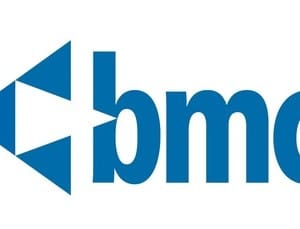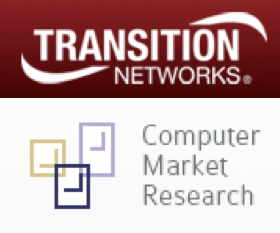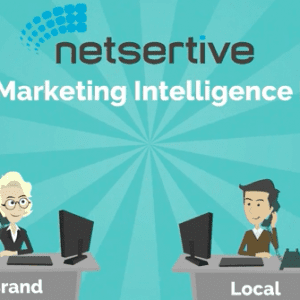Topics
Rethinking MDF: New Research Shows Channel Marketers Placing Increased Focus On Long-Term Impact Of Incentives
 Prizes, trips and financial spiffs have become staples as methods of incentivizing partners to meet or exceed sales goals and thresholds.
Prizes, trips and financial spiffs have become staples as methods of incentivizing partners to meet or exceed sales goals and thresholds.
However, with better tracking and benchmarks in place to measure the actual impact on revenue and demand generation, many channel marketers are starting to re-examine short-term incentive programs.
In addition, the ongoing Marketing Development Fund (MDF) programs and rebates traditionally offered as consistent funding to keep vendors top-of-mind, as well as offer lead and demand generation resources to partners are also being called into question.
New research and insights from top analysts are indicating an extreme shift to more long-term strategies that drive consistent revenue and loyalty for both partners and vendors.
For example, a recent survey of 102 U.S. technology channel players, from Channelinsight rated the following incentives in order from most effective to least effective:
- Performance-based incentives;
- Big-deal discounts;
- Volume rebates;
- Short-term price-based incentives;
- Sales Promotional Incentive Fund (SPIF) programs;
- Non-payment incentives; and
- MDF.
Most resellers are noting the benefits of performance-based incentives, which offer tiers of rewards based on incremental performance.
“Organizations want incentives and discounts for going after big deals that will drive the bottom line,” said Dan Hawtof, VP of Product Management for Channelinsight. “Resellers consider these [performance-based] incentives the most effective and what will most likely motivate them.”
However, there are several factors hindering the success of most incentive programs, including: the design and promotion of incentives, partner and vendor expectations of programs, and the results both parties receive from a demand generation and sales perspective.
Funding Market Development
As part of this shift, analysts are pointing to a need for better understanding of the value of MDF programs. Historically, vendors and suppliers tying MDF funds to incentives are only rewarding partners for past performance and tapping into already-penetrated markets, according to Laz Gonzalez, Service Director of Channel Management Strategies for SiriusDecisions.
“The term ‘marketing development funds’ implies that you’re going to develop a specific market,” Gonzalez told Channel Marketer Report. “However, partners receiving funds are the companies already working for vendors. It’s the same cast of characters being rewarded for their performance.”
“This is a first-come-first-serve approach, so vendors aren’t developing the market with it; at least not new markets,” Gonzalez continued. “They’re just using incentives to reward the performers.”
More than 50% of all channel marketing budgets go towards partner-to-customer initiatives, according to SiriusDecisions data, in which vendors create programs and hand them to partners to use in demand generation campaigns. While 80-90% of these initiatives are being funded through incentives, vendors and OEMs are struggling to pinpoint if and how partners are using incentives to generate demand, according to Gonzalez.
“Partner-to-customer strategies are a good place to use incentives, but only if the partner is truly using funds to generate demand,” Gonzalez said. “But the problem is not only are we going back to the same set of partners to drive demand, but we’re not paying enough attention to the process of how we create and obtain incentives, and how they are used.”
This process, according to Gonzalez, includes the following:
- The partner proposes a campaign/program;
- The vendor approves it;
- The program is built;
- The vendor executes the program; and
- The vendor needs proof of performance (which is hard to quantify for the majority of vendors, due to poor reporting processes).
“Incentives are used to influence partner behavior,” Gonzalez explained, “however, the key is putting money where it counts: lead-generating activities. Incentives should be seen as the currency to engage in marketing. Enablement and demand generation go hand-in-hand. Incentives bridge the gap between the two.”
Turning MDF Programs Upside Down
MDF funds have a 16.6% impact on channel partner revenue, according to research from Channelinsight. Although partners utilize these funds to fuel marketing efforts and overall presence across their channel, industry analysts indicate that there are many flaws in how MDF programs are implemented and maintained.
The primary reason why the majority of MDF programs fail is because vendors/suppliers expect channel partners to develop effective marketing campaigns and long-term goals, along with an estimate of overall costs to implement, according to Gonzalez.
However, industry benchmark research spotlights that channel partners simply do not have the marketing knowledge or resources to roll out compelling campaigns without guidance. In a recent survey, 41% of organizations revealed that their partners had insufficient sales and marketing ability, according to Aberdeen Group.
Rather than forcing partners to develop and present lackluster initiatives for MDF funds, vendors/suppliers should develop a cohesive menu of options based on partners’ target audience and segment.
“Companies have to wonder why they’re asking their partners to propose initiatives and campaigns when they know very well that they don’t have the resources, technology and skill to do so,” Gonzalez said. “The way we’re using incentives today is putting the person with the least marketing knowledge at the front of the line, and then we get caught up in the entire proof-of-performance model that follows it.”
Reseller research from Channelinsight also indicates that overall, vendors are doing a poor job of approving and distributing MDF in an efficient way.
“Vendors are not giving resellers the flexibility to really apply the marketing development funds the way they want,” Hawtof reported. “Although the reseller has a better idea of what may work for a specific market or segment, the vendor makes it really hard for that conversation to take place and that makes resellers less motivated to use the money [offered].”
To offer a seamless way for partners to choose optimal marketing initiatives based on their expertise and end-users wants and needs, best-in-class organizations such as HP, Juniper and Cisco are utilizing “white glove” services to tailor and offer marketing initiatives via incentive programs.
“Some call this strategy ‘pre-packaged marketing plays,’ which are campaigns and marketing initiatives that are vendor-provided,” said Craig DeWolf, VP of Client Services for hawkeye Channel. “These may or may not come from past successful partner campaigns. On top of that, there are marketing concierge services so that partners have an unbiased third-party person to [help them] walk through marketing offerings.”
Tapping Into Partner Insight For Optimal Marketing Plays
In order to create a compelling menu of MDF-funded, menu-based plays, vendors/suppliers must determine their target audiences for specific marketing campaigns. This requires in-depth insights and understanding from partners, according to Gonzalez.
“Rather than getting giving partners funds and trying to determine the proof of purchase and performance for incentives,” Gonzalez explained, “organizations should gather the information they need from partners and create the menu-based plays. Partners can then use incentives as the currency to buy off this menu.”
By understanding partner pain points, as well as end-user customers and prospects, vendors can utilize MDF funds as the hub of marketing certification and training programs, leading to increased participation. For example, organizations can reward partners for completing specific certifications by offering MDF fund points, redeemable for marketing assets or campaigns.
“Rather than using incentives as a reward for past performance, you need to use incentives to develop your market,” Gonzalez said. “Organizations must take a more prescriptive approach to incentives by using them to fund the activities they’re prescribing to channel partners, rather than using them for activities that partners suggest they embark on.”
Developing Optimal Incentive Programs
In order to keep incentive programs top-of-mind among partner networks, organizations must hone in on three key areas, according to Dan Leong, VP of Product Development for Loyaltyworks, a loyalty and incentive solution provider:
- Resellers’ knowledge of products and offerings through communication and educational incentives;
- The overall product quality and “comfort level” of selling specific items and/or services; and
- Differentiating sales incentives over competing brands.
“Periodic and short-term programs may yield some lift but the increase is not sustainable once the program ends or competition comes out with a better program,” Leong said. “To stay ‘best in class’ you need to be aware of what the brand competition is offering and react accordingly. Areas of attention can include product pricing, more and better selling aids and tools, testimonials on quality of product, more attractive and attainable incentive rewards, and more outreach relationship activities.”
Companies also must develop incentive goals and requirements that are attainable, and in turn, desired by partners, by keeping pace with market trends, economic stance, and demand for solutions and offerings.
“There is no sense providing an incentive if the audience quickly perceives that the goals are too high to attain and changes product loyalty to an alternative where goals are attainable,” Leong noted. “Because of this, programs have been modified to lower initial hurdles of qualification or implemented ‘degrees of winning’, where different performance levels yield different awards. This last initiative is designed to move away from participants feeling that they are either winners or losers.”
Best-in-class incentive programs also rely on accurate, real-time reporting, which allows partners to see where their sales progress rests and encourages them to push towards specific goals.
“The biggest concern we [at SiriusDecisions] get from suppliers is they have no idea how partners are using incentive dollars,” Gonzalez said. “They make it so difficult for companies to apply for an incentive program and manage the process of reporting back on incentives that many partners just opt to use their own marketing funds.”
Communicating and offering real-time metrics into sales progress is vital to piquing partner interest and most importantly, encouraging them to continue marketing and sales initiatives.
“A reseller needs to know daily or weekly where they stand in incentive programs,” Hawtof said. “They also need to know if they’re close to a sales threshold because it may give them that extra push to move to the next threshold, whatever it may be.”














